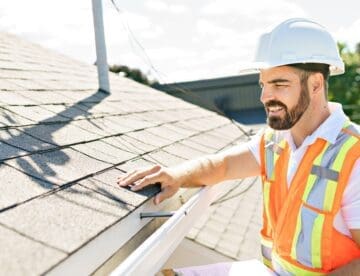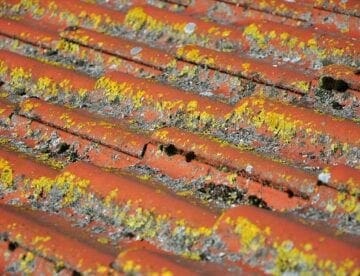Understanding your homeowners insurance in regards to your roof can be a mission in and of itself. Moreover, navigating through your policy and knowing if your roof is protected under your insurance can be frustrating. But it can be even more frustrating trying to understand your policy after your roof has been severely damaged.
There’s no reason to fret, though. At Code Engineered Systems we know just how burdensome it is to understand your homeowners insurance. For this reason, we’ve compiled a list of important information below for you so you can get a better grasp of your roofing homeowners insurance policy.
Does Your Homeowner Insurance Cover Your Roof?
If you asked this question before, you’ve probably gotten many different answers.
There’s no one way to determine if your homeowners insurance covers your roof; there are many aspects that factor into the eligibility for roof coverage.
The three main things to keep in mind, however, include:
- Most policies cover roof replacement if the damage that occurred was the result of an act of nature or of a random accidental event.
- Most policies won’t help pay for replacement or repairs on a roof that is deteriorating over time due to wear-and-tear or neglect.
- If your roof is over 20 years of age, it may have limited coverage if any exist.
Your roof is arguably the most afflicted area of your home. Roofs have to deal with rain, powerful winds, extensive exposure to the sun, and other elements that vary in intensity depending on your location.
Because of this, your roof is also a very important part of your home, which is why the dwelling coverage section of your policy may already cover it in the event of a disaster or other mishap. Before coverage occurs, however, you’ll still have to pay your policy deductible.
Does Your Policy Impose High Deductibles?
Certain policies will have a higher deductible for damages that are the result of powerful storms, such as hurricanes. If you’re a Florida resident, for example, your policy may impose a high deductible since you live in a high-risk state. Make sure you ask the insurance company if you’re not entirely sure.
What Qualifies Roofing Homeowners Insurance Coverage?
If your roof is damaged drastically — your roof was torn off your home or the roof has a massive hole in it — insurance will likely cover repair costs. Otherwise, even in events when nature is the cause, less devastating events won’t qualify your roof for coverage. One example is when your roof loses some shingles from high winds. Your insurance company may only consider this cosmetic damage and won’t cover any repair costs.
This is one of those grey areas many homeowners have to be wary of. Depending on the cause of damage, your insurance company may be able to determine that your roof needs no coverage at all.
Getting The Insurance Company to Pay For Your New Roof
Getting your insurance company to pay for your new roof will require a lot of effort from your end. For this reason, we recommend that you check out our other article about accomplishing this.
The basic rundown, however, is this:
When dealing with the insurance company, file your claim in a timely fashion. When you submit your claim early, you won’t have to wait too long for the reply. But be sure that you prepare your claim properly as your insurance company will try to find any reason not to approve it.
Also, consider hiring an independent inspector if you feel that your insurance company didn’t properly evaluate your roof’s damages.
Other things to be mindful of include:
- Hiring a qualified contractor
- Preparing for future claims (proving you maintained the roof properly before a disaster occurred will improve your chances of having insurance cover replacement)
- Keeping records of your claim as well as before-and-after photos of your repairs.
Saving on Roof Replacement
Your roof’s value depreciates every year it stays on your house. Due to this, many insurers may not decide to cover your roof if it is at least fifteen years old. Other factors that can contribute to little to no coverage include:
- Lack of maintenance
- Total negligence
- Expensive roofing materials
- Roofs with more than two layers of materials
Hiring an inspector that’s independent from your insurance company will increase your chances of getting the coverage you need. Before your inspector arrives, gather as many important documents as possible, including a copy of your current home insurance policy. Make sure to also have all reports, receipts, and photos of the damage that has occurred. Having such documents will be helpful during the claims process.
The Best Thing You Can do is to Protect Your Roof
The best way to increase your chance of roofing homeowners insurance coverage is to always care for and protect your roof.
One of the most defining factors that contributes to coverage is ensuring that you, the homeowner, properly maintain your home. For your roof, especially, it takes a lot of work to get it in optimal condition.
Always clean your roof when dirtied, and always repair it right away if you notice cracks in tiles or shingles. If your roof is reaching a certain age, consider replacing it. While it will be pricey to replace it, doing so now will provide a better chance for coverage in case of future disasters.
If you think your roof is okay, consider hiring an inspector anyways. Inspectors can accurately assess your roof for damage.
Hire Code Engineered Systems, Tampa’s Most Trusted Roofers
When your roof is damaged, make sure to hire only the best and most qualified contractors in all of Tampa; Code Engineered Systems. Once you’re approved for roofing homeowners insurance coverage, call us and we’ll make sure to provide you work and customer service you won’t find anywhere else.
For any inquiries or a free roof estimate, call us at 813-373-9088. You can also fill out our online form — Click HERE.




